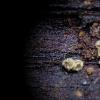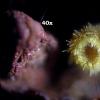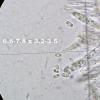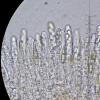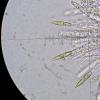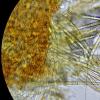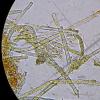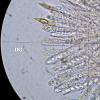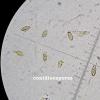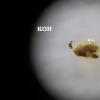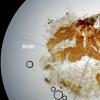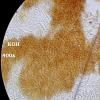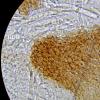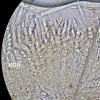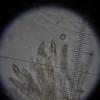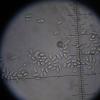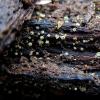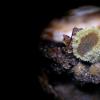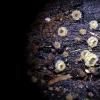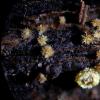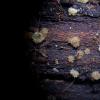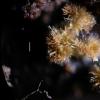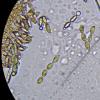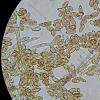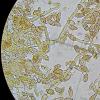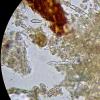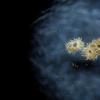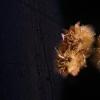
20-12-2025 23:08
Patrice TANCHAUDBonsoir, récolte sur sol sablonneux dans l'arri�

21-12-2025 09:32
Hello.A tiny ascomycete found embedded in wood in

20-12-2025 15:47
Mirek GrycHi.These grew on pine wood that was heavily covere

18-12-2025 21:17
Pol DebaenstThe identification took me to Byssonectria deformi

15-12-2025 07:09
 Danny Newman
Danny Newman
indet. Rutstroemiaceae sp. on unk. fallen leavesMc

19-12-2025 10:10
Patrice TANCHAUDBonjour, récolte réalisée en milieu dunaire, a

18-12-2025 17:23
 Bruno Coué
Bruno Coué
Bonjour,je serais heureux d'avoir votre avis sur c
Diplocarpa bloxamii
Joaquin Martin,
07-01-2015 15:24
Apothecia very, very young 0,4 mm-0,5 mm above wood indeterminate (probably quercus) worked as part of a fence.
The micro is perfect with the plates DVD Baral HB_3562, HB_3864-1, HB_3864-2 and HB_7014_7015
I guess that it is correct.
Best regards
Thomas Læssøe,
07-01-2015 15:35
Re : Diplocarpa bloxamii
Also reminds me of Trichopezizella cf subsulphurea .
The hairs appear to be too differentiated for the Diplocarpa.
cheers
The hairs appear to be too differentiated for the Diplocarpa.
cheers
Hans-Otto Baral,
07-01-2015 15:56

Re : Diplocarpa bloxamii
The microscopy is clearly Diplocarpa bloxamii, but the macro not.
This species is presently under work by Kadri Pärtel and me. How abundant is your sample? Important would be a median section to see the excipulum, and a KOH test whether red.brown pigment extrudes upon contact with KOH.
Although Kadri gained a sequence of this species, it might be that she is interested for a further analysis.
Where did the conidia come from?
Great record! I am interested in the collection data. Also please have a closer look at the broken wood, is it obviously ring-pored (typical of Quercus)? A macrophoto of the cross-broken wood would be helpful.
Zotto
This species is presently under work by Kadri Pärtel and me. How abundant is your sample? Important would be a median section to see the excipulum, and a KOH test whether red.brown pigment extrudes upon contact with KOH.
Although Kadri gained a sequence of this species, it might be that she is interested for a further analysis.
Where did the conidia come from?
Great record! I am interested in the collection data. Also please have a closer look at the broken wood, is it obviously ring-pored (typical of Quercus)? A macrophoto of the cross-broken wood would be helpful.
Zotto
Eduard Osieck,
07-01-2015 21:20
Re : Diplocarpa bloxamii
I found this species (teleomorph + anamorph) also in the Netherlands in 2013: 1st record for the country. Please let me know if you are interested in further details.
Eduard
Eduard
Hans-Otto Baral,
07-01-2015 22:45

Re : Diplocarpa bloxamii
Oh yes, if you have photos etc. please send to me. Also the collection data. The anamorph was never reported in the literature, at least I never found a matching description.
Hans-Otto Baral,
08-01-2015 20:50

Re : Diplocarpa bloxamii
Hallo
Im Prinzip ja, ich denke die Art ist weit verbreitet, aber doch selten auftretend und nur durch Zufall zu finden.
Zotto
Im Prinzip ja, ich denke die Art ist weit verbreitet, aber doch selten auftretend und nur durch Zufall zu finden.
Zotto
Joaquin Martin,
09-01-2015 14:21
Re : Diplocarpa bloxamii
Hi
I would like to see if it is possible to photographs of the species, at different stages of growth, both the telemorfo and the anamorph.
Thank you all.
I would like to see if it is possible to photographs of the species, at different stages of growth, both the telemorfo and the anamorph.
Thank you all.
Joaquin Martin,
09-01-2015 18:32
Hans-Otto Baral,
09-01-2015 19:07

Re : Diplocarpa bloxamii
Yes, I think aölso that the apotehcia are unsually little developed. The extruding yellow sap is typical indeed. maybe it would be more brownish in higher concentration.
Did you test the separate anamorph heaps for conidia and conidiophores?
Did you test the separate anamorph heaps for conidia and conidiophores?
Eduard Osieck,
10-01-2015 21:09
Re : Diplocarpa bloxamii
The species was found on 10/10/2013 in the Raaphof (Bunnik, near Utrecht), 52.03N 05.13 E. It is a small deciduous forest on river clay, mainly Fraxinus, Quercus and Populus.
The substrate was a rotten piece of unidentified wood, the ascocarps were hidden in a crack, but the yellow anamorph accompanying it was striking (the reason for collection).
The hymenium was olive green with beige margin, outside dark brown, hairy.
Largest ascocarp 3 mm in diameter, spores 6-8,5 - 3-4 micron, apices of paraphyses fusiform and septate. Conidia in chains, about 5 x 4 micron.
I made only some microscope photos of paraphyses and spores.
The substrate was a rotten piece of unidentified wood, the ascocarps were hidden in a crack, but the yellow anamorph accompanying it was striking (the reason for collection).
The hymenium was olive green with beige margin, outside dark brown, hairy.
Largest ascocarp 3 mm in diameter, spores 6-8,5 - 3-4 micron, apices of paraphyses fusiform and septate. Conidia in chains, about 5 x 4 micron.
I made only some microscope photos of paraphyses and spores.
Do you know the paper of Ribollet (UN ASCOMYCETE A RECHERCHER: DIPLOCARPA BLOXAMII (Berk. Ex Phill.)Seaver, Cahiers Mycologiques Nantais N° 14 - juin 2002)? The paper describes both teleomorph and accompanying anamorph.
Hans-Otto Baral,
10-01-2015 21:40
Joaquin Martin,
10-01-2015 23:49
Joaquin Martin,
11-01-2015 11:57
Hans-Otto Baral,
11-01-2015 12:23

Re : Diplocarpa bloxamii
Yes, this is obviously the anamorph I also saw. But yours are sessile, are they?

